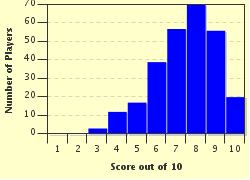Quiz Answer Key and Fun Facts
1. It is accepted that the human race began in Africa, and spread to the east and west of the Euroasian continent. Somewhere around 10,000 BC, groups came over to the Americas from the area of Asia. Who were they?
2. The movement from the Asian mainland to the Americas was done without the aid of planes, trains or automobiles, so it took centuries to get anywhere. Although it would be around 10,000 years before the area closest to the Bering Straits would officially become the state of Alaska, and the Canadian Yukon, there were people living there. Who were they?
3. Of those groups which chose to stay in what is now North America, movement was eastward, including groups known for a specific feature now found from Ohio to Mississippi. What is this feature?
4. Although we were taught for years that Christopher Columbus discovered America, new findings point in a different direction. Who does current study suggest was the first to set foot in North America, coming from the east?
5. Christopher Columbus made landfall in 1492. Where exactly did he land?
6. When the Spaniard Ponce de Leon did make landfall on the mainland of North America, he was looking for what?
7. The impact of European movement from the east to the East Coast continued, as religious persecutions ran rampant, primarily in the British Isles. In September of 1620, a merchant ship set sail with an unusual cargo. The Mayflower found itself carrying a group colonists, including Protestant Separatists, aka Pilgrims, hoping to find a place to start a new life. In what present-day state did they land?
8. Beginning in the 17th century and on into the 18th, the Spanish, although holding the greatest amount of land in the Americas, were no longer actively exploring North America. The French had begun explorations throughout the area which would become the Midwest, from the future Canada to the Mississippi delta. As a result of what war did France cede everything west of the Mississippi River to Spain, and all holdings east to Great Britain?
9. Spain still held a great deal of land west of the Louisiana Purchase as part of Mexico, but Mexico won independence in 1821. When the burgeoning population of the US started pushing into this territory, the result was war. Peace talks hammered out what bilateral treaty?
10. In 1867, US Secretary of State William Seward negotiated the purchase of Alaska from the Russians. Although at the time it was known as "Seward's Folly", the discovery of gold changed all that. Far out in the Pacific Ocean, the US had acquired the Hawaiian Islands when the sovereign government was overthrown. These two territories became the 49th and 50th states in what year?
Source: Author
babsr
This quiz was reviewed by FunTrivia editor
bloomsby before going online.
Any errors found in FunTrivia content are routinely corrected through our feedback system.


